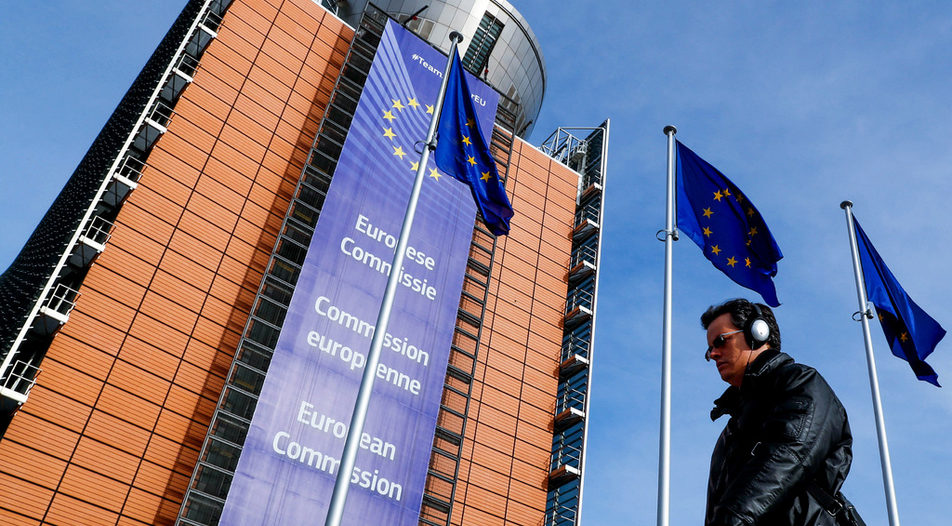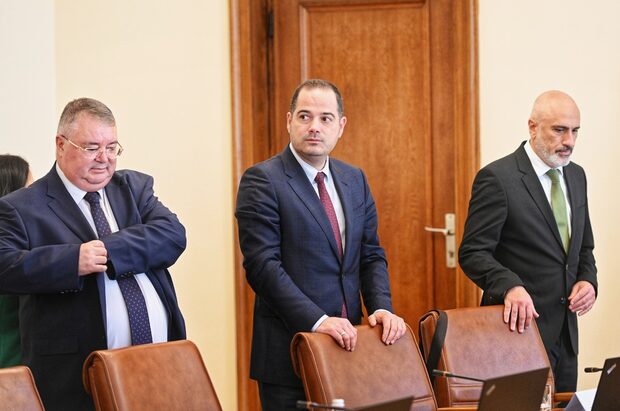Twelve years after the European Commission launched the Cooperation and Verification Mechanism (CVM) to help Romania and Bulgaria reform their judiciary and overcome corruption, tangible results are still lacking.
The monitoring mechanism was introduced in 2007 to prevent new member states contaminating the European Union with their failings. Annual reports about institutional deficiencies were meant to stir reform. And underlying it all was the belief that rule of law problems could be resolved in three or four years.
In Bulgaria, however, the judicial system is functioning no better than in 2006, and the fight against corruption is little more than a charade, ignored even by its intended audience in Brussels.
Nonetheless, the latest CVM report issued in November flattered Sofia for being on the right track, by stark contrast with Bucharest, and indicated the European Commission might end its scrutiny by the end of 2019. So why has the Commission decided this when it's self-evident that the situation in Bulgaria is far from rosy?
Several factors contribute to the inefficiency of the CVM. First is the fundamental misconception that criticism and calls for reforms - the main instruments of the EU's executive body - will carry the same weight as during the pre-accession period. The second is the very limited scope of action of the EU in dealing with the rule of law. Member states resist Brussels' attempts to broaden its clout because they fear undermining their own national leverages of power. The third is the institutional rigidity of the EU (which is a union of states, after all) in interacting with local governments, who are supposed to be authentic custodians of public interest. But when these same governments generate corruption, the EU finds itself helpless.
The birthmark
From the outset, the EU found the task of accepting the 10 former communist countries of Central and Eastern Europe to be extremely taxing. It wasn't just the number of candidates and their cultural and historical heritage. More telling was the chasm between their economic, institutional, and civic characteristics, and those of the West. In order to actually enlarge EU in foreseeable future, all efforts were focused on surveillance and monitoring over to core issues only. Hence these countries' pre-accession preparations focused solely on their transition to a market economy. Even more importantly, preparation during these crucial stages was reduced to incorporating hundreds of thousands of pages of EU law into the legislation of future member countries.
During the run-up to membership, it became clear that the EU was confronting a totally different type of culture and civic society. Nothing short of a total transformation of all layers and facets of public life was required. Naturally, the desire for change encountered widespread resistance. The EU has no mechanisms to compel reform, precisely because its own institutional values and legislative logic require it to function as a voluntary union of partners who clearly understand the mutual benefits of membership.
This is how the inherent contradiction of the eastward expansion of the EU was reformatted - it must force systemic reform, but it has no means to.
During membership negotiations, however, the Commission surprisingly acquired a powerful tool for influencing member states. Uncertainty over eligibility for accession impelled countries to satisfy recommendations in the Commission's annual reports, which assessed each candidate's progress as compared to the evaluations and suggestions from the previous years. Vetting by the Commission seemed to magically incentivize candidates to run for the fulfilment of membership requirements. Still, the Commission's stipulations were never laid out clearly and unequivocally. It left the door open for decisions motivated by paramount geopolitical concerns rather than centred on the specific achievements of a given country.
As the ever-expanding set of reforms met further local resistance, the Commission was forced to downplay the accession requirements. Not only were reforms reduced to the transposition of EU law into national legislation (to a significant extent irrelevant in terms of practical application), but achievements lost their importance as well. Progress among candidate countries was gauged not by advances in the here and now, but instead on promised prospective achievements. Hence this depended heavily on national governments' political will.
This was the inevitable price for successfully integrating Eastern bloc countries into the EU. The decision for eastward expansion, taken in 1997, became fact in 2004. Even though it shouldn't have been surprised, the old EU members and the Commission were astonished that newcomers' zest for reform had greatly reduced by 2002 and had practically vanished by 2004. For example, when Poland was admitted, it promised to complete 260 assignments after joining the Union, all of which ground to a halt. On top of that, there was the great shock of 2005 when French and Dutch citizens rejected the EU Constitution in referendums, a document that actually consolidated the core of EU law at the time. Citizens of two founding member states had rejected nothing less than the EU itself.
With the impetus for a more unified Europe already lost, and new members breaking their promises, the Commission faced a daunting challenge. It had to convince sceptical member countries that Bulgaria and Romania (both verifiably behind in their preparations to join the EU even though they'd signed the treaties in 2005), could join without causing severe long-term damage to the EU's overall state and development.
This led the Commission to create unprecedented CVM. Its main goal was to defuse discontent among member states concerned about compliance with the treaties due to come into effect on January 1st 2007. It was also meant to attest to the Commission's awareness of the seriousness of the problems and its willingness to try to resolve them. The CVM's "higher" ostensible function - serving as a litmus test of Bulgaria and Romania's implementation of certain legal benchmarks - went by the wayside. So what hope was there for defeating the systemic, politically patronized corruption endemic to both countries?
The inherent inefficiency of the mechanism
The reasons for the CVM's shortcomings arise from two key circumstances.
First, the EU lacks a commonly accepted definition of the rule of law, let alone a common policy standard in this field. Consequently, a normative framework and the instruments to enforce it don't exist. Without such a legal foundation, the EU is powerless to sanction transgressions regardless of their severity. Until a few years ago it never occurred to the EU that it would have to enforce policies to defend fundamental values such as the rule of law and liberal democracy - both basic pillars of its foundation.
Hence the Union's ineffectiveness in dealing with the increasingly authoritarian tilt in Poland and Hungary. As it has transpired, the transgressions in these countries have now surpassed those of Bulgaria and Romania. These challenges, not just in post-communist countries but in Italy and Greece as well, have proved too much for the EU.
Second, the Commission concluded that the reform inertia that accompanied the race for membership belied a genuine desire for change. Basically, the Commission concluded that the governments in question wanted to implement reforms but didn't know how to do so. As far back as 2013 it was clear that the CVM had constructive potential, and a government could achieve the reforms in question within the initially allotted 3-4 years but only if the will existed among national politicians and magistrates to drive them through.
Political scientist Heather Grabbe remarked in her 2006 book The EU's Transformative Power that the EU could work productively with willing partners, but not reluctant regimes. Transferring legislation proved relatively painless when it came to those aspects that didn't directly affect the mechanisms of power in post-communist societies. However, introducing the rule of law in full would involve altering the very core of the political system and the structure of social life. Hence the deepest and fiercest resistance has been met among corrupt local institutions, as well as the cliques and individuals representing them.
The CVM's political ineffectiveness, stemming from its own feeble arsenal, an unrealistic appraisal of its own ability to influence national governments, and an underestimation of their will to resist, all bode ill for any prospect of change. This is why in 2019 CVM will cease to exist.
*Professor Georgi Dimitrov is member of Jean Monnet Centre of Excellence at Sofia University.
Twelve years after the European Commission launched the Cooperation and Verification Mechanism (CVM) to help Romania and Bulgaria reform their judiciary and overcome corruption, tangible results are still lacking.
The monitoring mechanism was introduced in 2007 to prevent new member states contaminating the European Union with their failings. Annual reports about institutional deficiencies were meant to stir reform. And underlying it all was the belief that rule of law problems could be resolved in three or four years.












